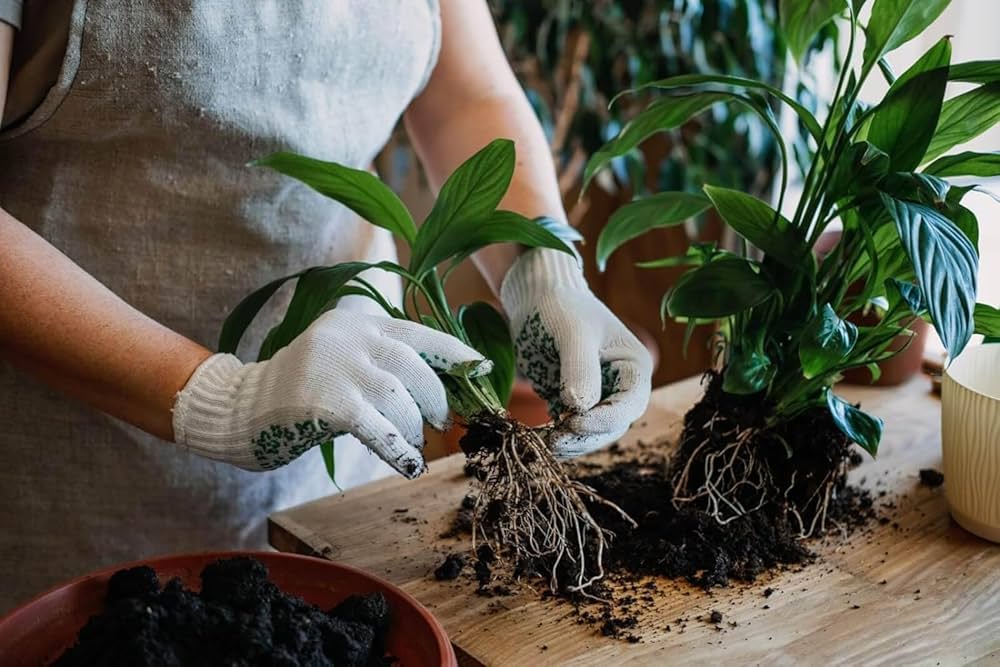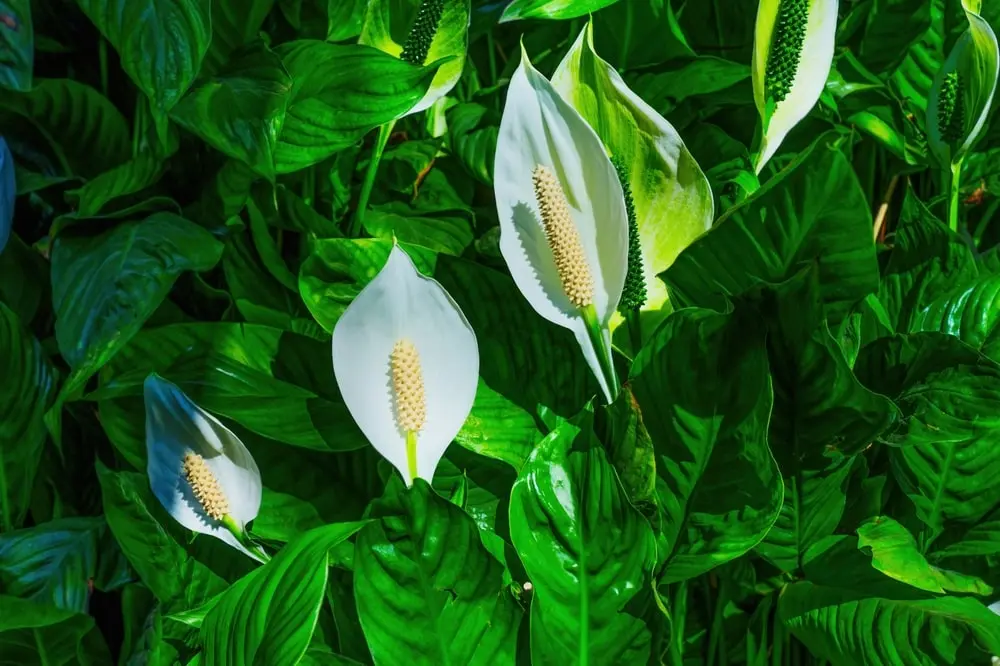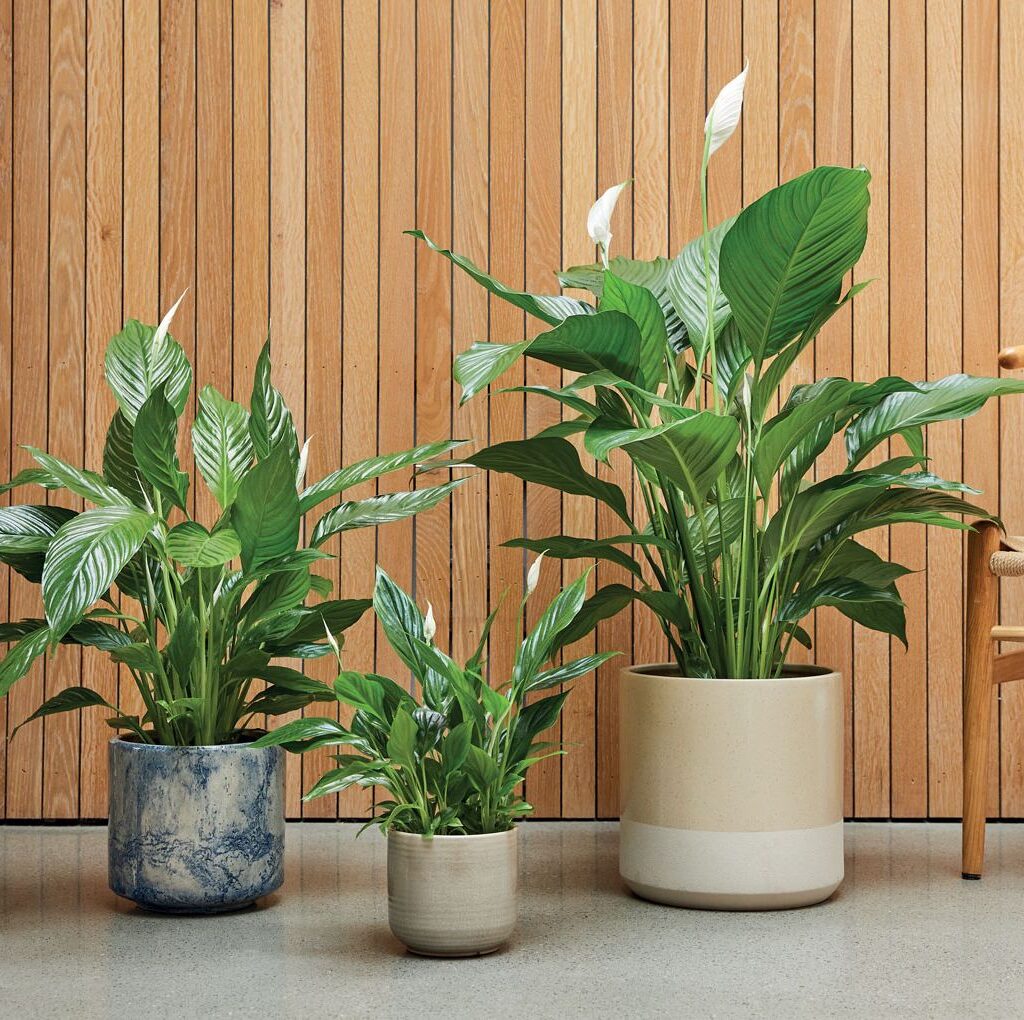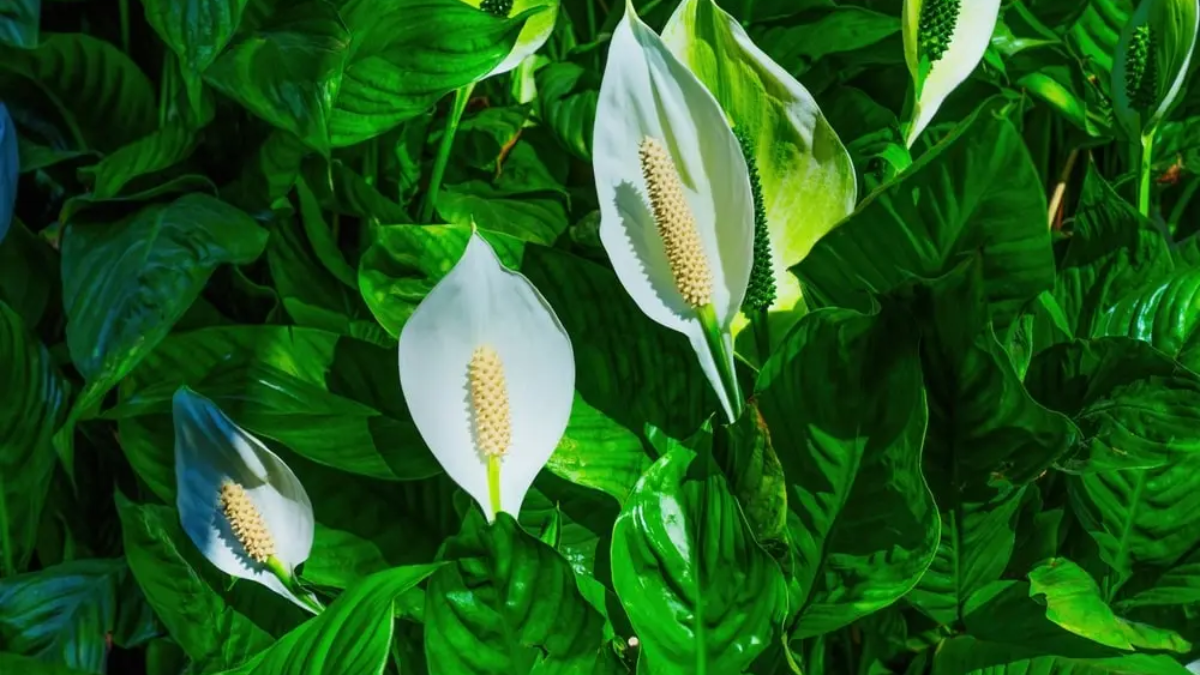The Peace Lily (Spathiphyllum spp.) is one of the most cherished and enduring houseplants around the world. With its lush, deep green foliage and graceful white blooms, this plant brings elegance and serenity to any interior space. Beyond its beauty, it’s also known for its excellent air-purifying qualities, making it a perfect addition to homes and offices alike.
Whether you’re a beginner plant enthusiast or an experienced indoor gardener, understanding the specific needs of a Peace Lily is essential to keep it healthy and blooming. In this comprehensive guide, we’ll walk you through everything you need to know about how to care for a Peace Lily plant indoors.

About the Peace Lily Plant
Despite its name, the Peace Lily is not a true lily. It belongs to the Araceae family and originates from the tropical rainforests of Central and South America. Its most recognizable feature is the white “flower,” which is actually a spathe — a modified leaf — that wraps around a central spadix containing tiny flowers.
Peace Lilies are prized for their:
- Elegant white blooms
- Deep green, glossy leaves
- Air-purifying abilities, removing toxins like benzene, formaldehyde, and carbon monoxide
They’re low-maintenance and forgiving, making them ideal for indoor environments.

Light Requirements for Indoor Peace Lilies
Peace Lilies prefer bright, indirect light, mimicking the filtered sunlight they receive under the rainforest canopy. While they’re tolerant of lower light levels, their growth and blooming may slow in dim conditions.
Best Placement:
- Near an east- or north-facing window
- Avoid harsh, direct sunlight which can scorch the leaves
- In lower light, the plant will focus on foliage growth rather than blooms
Pro Tip: If your Peace Lily isn’t flowering, it likely needs more light.

How to Water a Peace Lily Indoors
Watering is one of the most important aspects of Peace Lily care. They prefer consistently moist soil but are highly sensitive to overwatering, which can cause root rot.
Watering Guidelines:
- Water when the top 1–2 inches of soil feel dry
- Use room-temperature, filtered, or distilled water to avoid chlorine and fluoride buildup
- Pour water evenly until it begins to drain from the bottom of the pot
- Reduce watering frequency in the winter months
Pro Tip: Peace Lilies are known for their dramatic droop when thirsty. If you notice your plant wilting, water it promptly — it typically perks up within hours.

Best Soil for Peace Lilies
Peace Lilies thrive in a well-draining, rich, and aerated soil that holds some moisture but doesn’t stay soggy.
Ideal Soil Mix:
- 2 parts peat-based potting mix
- 1 part perlite or coarse sand
- 1 part orchid bark (optional for extra drainage)
This blend ensures good moisture retention and root aeration.
Choosing the Right Pot
Always use a pot with good drainage holes.
Terracotta, ceramic, or plastic pots work well, provided excess water can escape freely.
Size Tip: Peace Lilies prefer slightly snug pots. Only repot when you notice roots circling the pot’s base or poking through the drainage holes — typically every 1–2 years.
Fertilizing a Peace Lily Plant Indoors
While Peace Lilies aren’t heavy feeders, providing nutrients during the growing season supports healthy foliage and encourages blooming.
Fertilizing Guidelines:
- Use a balanced, water-soluble houseplant fertilizer (20-20-20)
- Apply at half-strength every 6–8 weeks during spring and summer
- Avoid fertilizing in fall and winter when the plant’s growth slows
Pro Tip: Over-fertilizing can lead to brown leaf tips — always dilute your fertilizer appropriately.
How to Encourage Blooms
A common question among Peace Lily owners is how to encourage their plant to flower indoors.
Blooming Tips:
- Provide bright, indirect light
- Fertilize regularly during the growing season
- Avoid overwatering and root-bound conditions
- Maintain humidity levels between 50–60%
Remember: Peace Lilies naturally bloom in spring and early summer. After flowers fade, cut the spent blooms at the base to encourage new growth.
Pruning and Maintenance
Peace Lilies are low-maintenance but benefit from occasional grooming.
Pruning Tips:
- Remove yellowing or brown leaves at the base using clean, sharp scissors
- Cut spent flower stalks once they fade to promote new blooms
- Wipe leaves regularly with a damp cloth to remove dust and maintain glossy foliage
Common Pests and Problems
Though generally resilient, Peace Lilies can face occasional pest and disease issues.
Common Pests:
- Spider mites: Fine webbing and tiny speckles on leaves. Wipe with soapy water or neem oil.
- Mealybugs: White cottony masses on stems. Remove with a cotton swab dipped in rubbing alcohol.
- Aphids: Cluster on new growth. Rinse with water or treat with insecticidal soap.
Common Problems:
- Yellow leaves: Typically caused by overwatering or underwatering.
- Brown leaf tips: Often due to dry air, fluoride in tap water, or fertilizer buildup.
- Wilting: A sign of either dry soil or root rot from overwatering.
Pro Tip: Ensure good air circulation and avoid placing your Peace Lily in drafty or extremely dry areas.
Ideal Temperature and Humidity
Peace Lilies prefer the warm, humid conditions of their tropical origins.
Ideal Conditions:
- Temperature: 65–85°F (18–29°C)
- Humidity: 50–60% or higher
Tips to Increase Humidity Indoors:
- Use a humidifier near the plant
- Group plants together to create a humid microclimate
- Place the pot on a pebble tray filled with water
- Mist leaves occasionally with distilled water
Propagating a Peace Lily
Peace Lilies are easily propagated through division — separating the plant at the roots.
Propagation Steps:
- Remove the plant from its pot.
- Gently separate clumps of roots, ensuring each division has several leaves.
- Plant each division in a new pot with fresh soil.
- Water thoroughly and keep in a warm, shaded spot for a week before returning to bright, indirect light.
This is best done in spring when the plant begins active growth.
Benefits of Growing a Peace Lily Indoors
Besides its beauty and ease of care, a Peace Lily offers multiple benefits:
- Air Purification: Removes harmful indoor toxins like benzene, formaldehyde, and carbon monoxide.
- Mood-Boosting: Its lush greenery and elegant flowers promote calm and relaxation.
- Petite or Large Varieties: Suitable for tabletops or large floor displays.
- Natural Humidifier: Its transpiration helps raise indoor humidity.
Final Thoughts
Caring for a Peace Lily plant indoors is simple and deeply rewarding. With its glossy leaves, elegant white blooms, and air-purifying abilities, it’s no wonder this plant remains a household favorite.
By following the guidelines in this article — from providing the right light and water to encouraging blooms and maintaining humidity — you’ll enjoy a vibrant, healthy Peace Lily that brings beauty and tranquility to your indoor space for years to come.






Leave A Comment